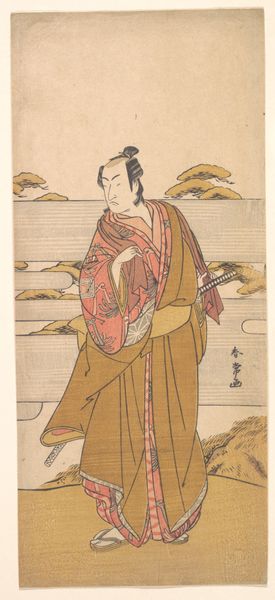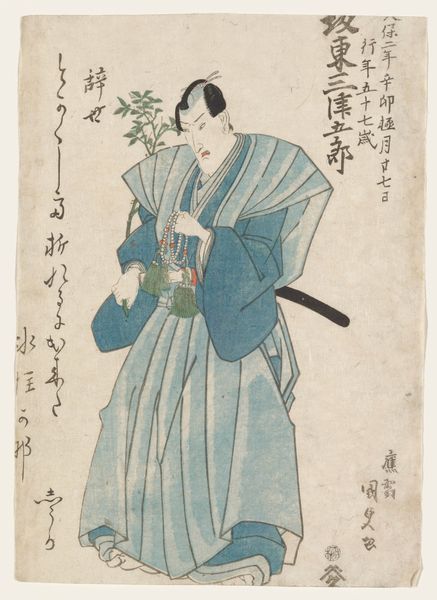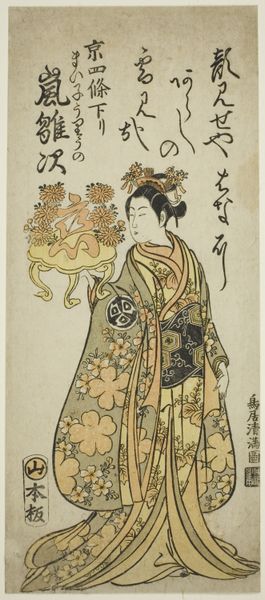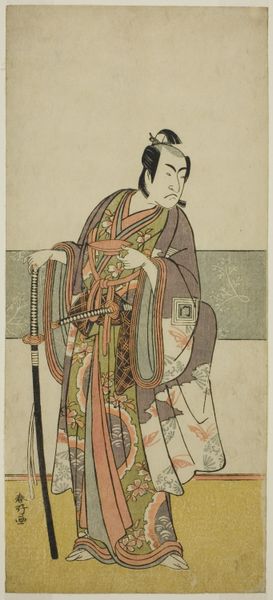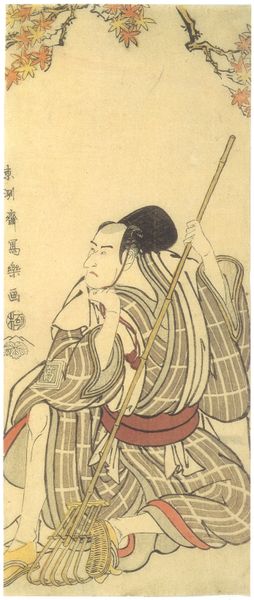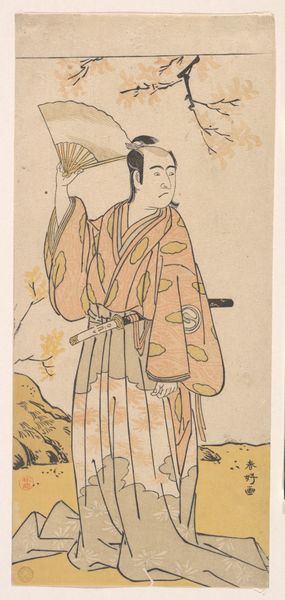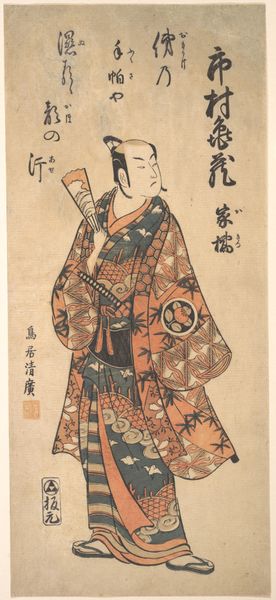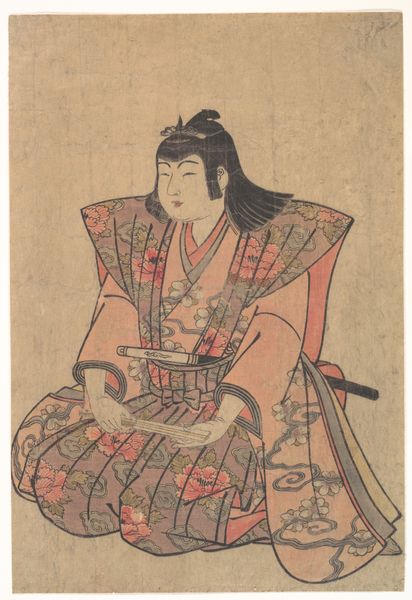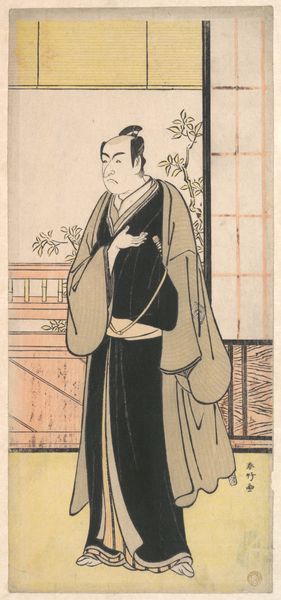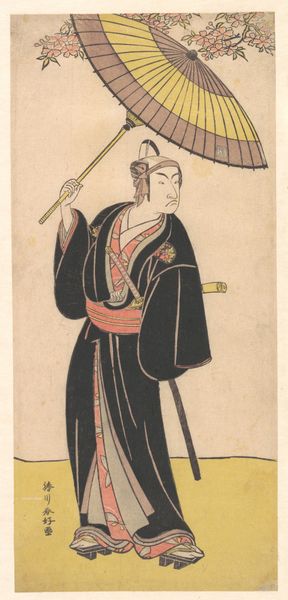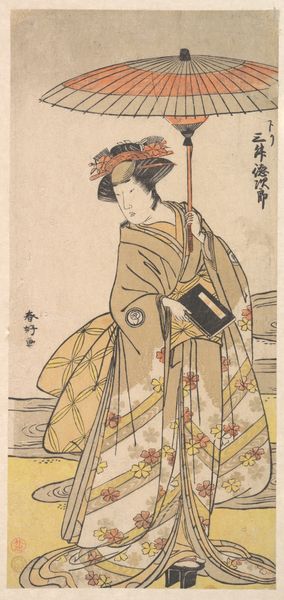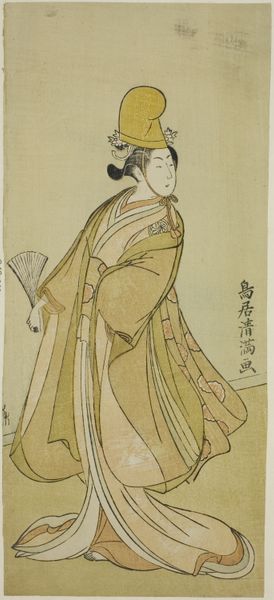
#
portrait
# print
#
asian-art
#
ukiyo-e
#
figuration
Dimensions: 12 1/4 × 5 1/2 in.
Copyright: Public Domain
Editor: Here we have Torii Kiyomitsu's "The Actor Ichikawa Yaozo II," a print from around 1771, housed right here at the Art Institute of Chicago. It feels incredibly staged, but somehow also spontaneous. The actor’s pose seems…caught. What strikes you when you look at it? Curator: Oh, I'm immediately drawn into the quiet drama. It’s not bombastic Kabuki mid-performance, is it? This feels…personal. It's like peering into the offstage life, a stolen glance. Kiyomitsu's capturing not just the *who* but the *aura* of the actor. He looks a bit peeved, don't you think? Almost like he's been caught mid-thought, contemplating something a bit thorny amidst all the elegant theatricality. What do you make of the background? The irises and water feel symbolic to me. Editor: Symbolic how? I mostly see them as... pretty! And very stylized, of course. The water seems more like waves of color than actual water. Curator: Indeed. It's a stylized world, absolutely! I'm thinking the irises—traditionally associated with boys’ day and strength, could allude to Yaozo's on-stage virility or potency. The stylized water, though… It suggests a stage setting, yes, but water, culturally, it often means fluidity, adaptability... perhaps even the ephemeral nature of performance itself. He exists here, immortalized in print, but his actual performances vanished the moment they were done. Tell me, do you see the print as static or dynamic? Editor: I see the tension between static and dynamic now that you point it out. The irises seem very still but he seems to be moving—like he’s been interrupted and turned around. Curator: Precisely! That tension between a fleeting moment and the enduring artwork. Kiyomitsu wasn’t just documenting, he was, to my mind, interpreting and *feeling* what it meant to embody a role, to be a star in that fleeting, fiery moment. Editor: I see what you mean. Thanks to you, I now look at Japanese Ukiyo-e art and realize how profound, even poignant it can be. Curator: And for me, sharing that initial delight and uncovering these layers of cultural significance – pure joy! Let’s look at the next one.
Comments
No comments
Be the first to comment and join the conversation on the ultimate creative platform.
